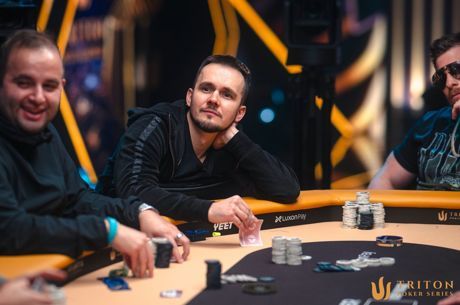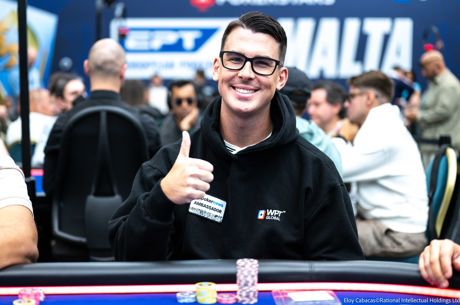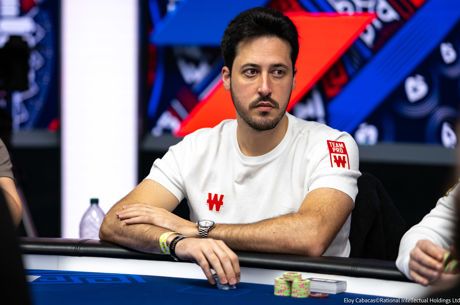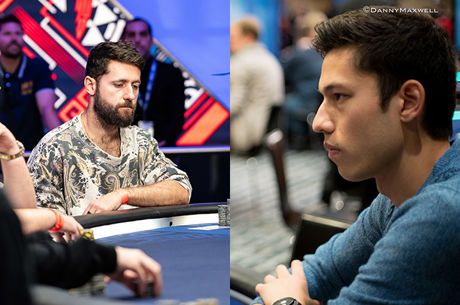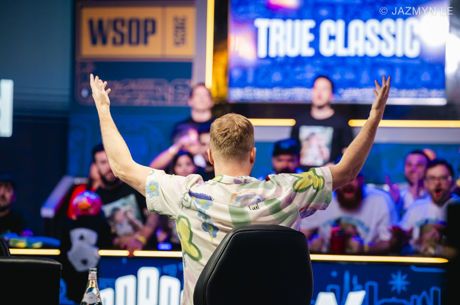The Absent Chip Leader: An Interesting Final Table Dynamic

Due to some major changes occurring in my life right now, I’ve not had much time for playing poker during the past five or so weeks, but this week I dipped my toes back into the world of low-stakes multi-table tournaments.
One of the tournaments that I entered was on Betfair Poker, a €3 buy-in no-limit hold’em turbo where you were permitted to make one rebuy and one add-on. This is one of my favorite tournament formats thanks to the single rebuy making the stacks a little deeper at the business end of the tournament despite the turbo blind structure.
This particular tournament attracted 114 players, myself included, so we weren’t playing for a ton of money, but I thought it was perfect for delving back into the fray.
The tournament itself was rather nondescript with very few hands of note worth reporting. However, upon navigating my way to the final table, an interesting dynamic became apparent that I thought was worth sharing as it was both unusual and helped illustrate the importance of remaining keenly aware of chip stacks during a tournament’s crucial final stage.
As nine-handed play began I was sixth in chips, but with blinds at 2,500/5,000 (with a 500 ante) was down to a paltry 6.3 big blinds. Most of my opponents were in similarly precarious positions, with the shortest stack having less than three big blinds. Even the player in second place only had 10 big blinds.
Meanwhile the chip leader enjoyed an overwhelming advantage with a stack of about 250,000 or 50 big blinds. It was a nice position for the leader to be in, insofar as the player was practically nailed on to walk away with the €130-ish first-place prize.
There were a three eliminations in fairly short order, and the inevitability of Mr. Big Stack carrying away the trophy seemed to become more likely. Then something unexpected happened that altered my strategy completely — the chip leader disconnected and didn’t reconnect.
Suddenly we’d gone from being bullied by this monster stack to playing six-handed (effectively five-handed due to the sit-out) as short stacks. At that point the blinds had risen to 3,500/7,000 with a 700 ante, making the average stack of the active players a mere 6.4 big blinds. Usually this would turn the remainder of the tournament into a push-or-fold scenario, but it quickly became apparent that all four of my active opponents were wanting to ladder up the payouts, obviously waiting for someone else to bust.
As soon as I cottoned onto this, I began raising my button relentlessly, not least because the big stack sitting out was in my small blind and the big blind seemed to have the auto-fold box ticked. Before long I had built up to about 12 big blinds while my opponents were down to between four and five, which would usually mean an automatic call with a huge part of my range should any of them move all in. Except I didn’t make any calls without a big hand, and even folded a number of relatively strong hands when my opponents came rampaging in with short-stacked shoves.
Despite the high blinds and shallow stacks I felt I had a significant edge over my passive opponents. Plus if I managed to get heads-up with the player sitting out I was guaranteed a win. So with this in mind I turned down an immediate small edge so that I could take advantage of a much larger edge in the future. While this is almost always a concept to apply in the early stages of a tournament — or when stacks are much deeper, at least — the unique situation this tournament offered meant that conventional poker wouldn’t suffice.
I got lucky pushing with 8♦8♥ and getting there versus the second largest stack’s K♦K♠ to find myself sat as the chip leader and eventually went on to claim a victory in my first tournament back at the virtual felt.
For a more detailed, mathematical look at similar scenarios to the one described above, do a search for “ICM” or the Independent Chip Model and learn how the concept applies to final table dynamics — but it can be a little hard going, so be prepared for lots of brainwork. Tony Dunst helps get us started on the subject with an explanation here in “Tournament Chips Aren't Dollars: Explaining the ‘Independent Chip Model.’”
Get all the latest PokerNews updates on your social media outlets. Follow us on Twitter and find us on both Facebook and Google+!





